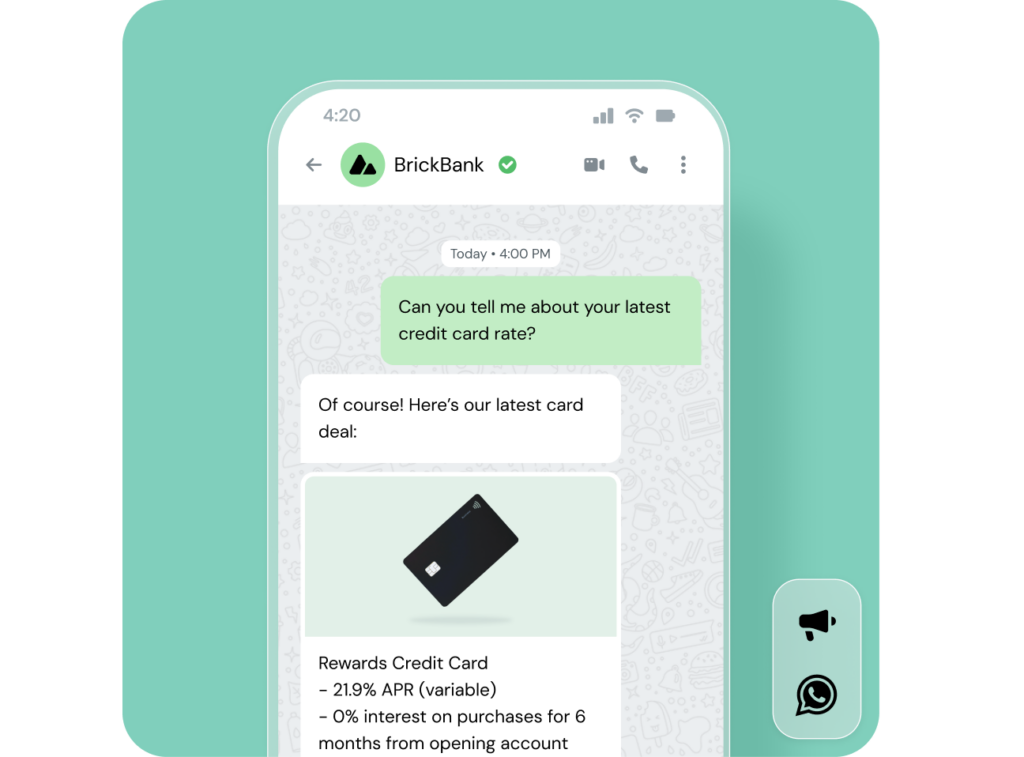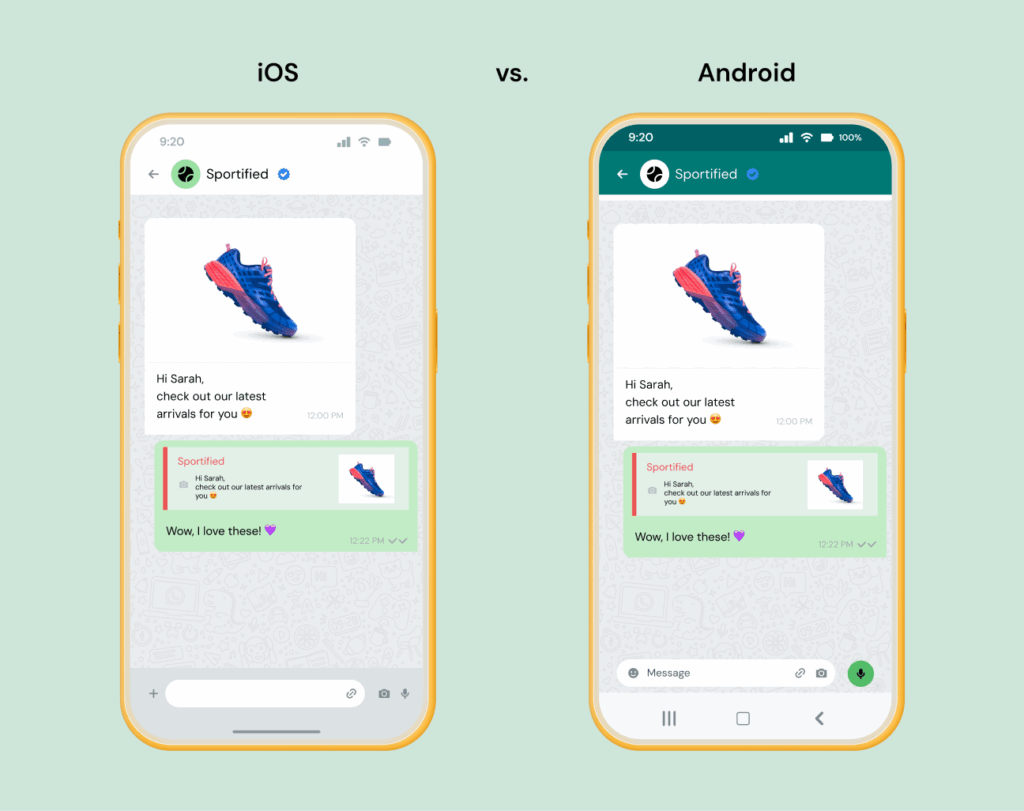Insights
WhatsApp in the U.S.: Latest statistics, user numbers, and business relevance in 2025

Insights

WhatsApp is huge globally, but U.S. adoption has lagged. That’s changing. Usage in the USA has picked up over the last few years.
What does that mean for businesses? Is it worth investing in WhatsApp as a communication channel? To give you better insights, we’ve put together the latest stats, user numbers, and business data around WhatsApp in the U.S.
WhatsApp tops three billion users worldwide and ranks among the biggest social platforms. But while WhatsApp is extremely popular in the rest of the world, in the U.S. – WhatsApp’s home base – it’s still not as widely adopted as Apple’s iMessage, SMS, or even Facebook Messenger.
That has started to shift. In 2023, Mark Zuckerberg, CEO of WhatsApp’s parent company Meta, announced that 2024 would be the year of WhatsApp in the U.S. – followed by targeted investment and promotion in the country.
Recent numbers and behavior suggest WhatsApp is having a moment in the U.S.
In July 2025, Zuckerberg posted on his WhatsApp Channel that the app passed 100 million U.S. monthly active users (MAUs). That’s up roughly two million year over year, making the U.S. one of WhatsApp’s fastest-growing markets.
Per SQ magazine, WhatsApp holds 32% market share in North America, but usage varies widely by demographics and location.
As a recent Pew Research Center study shows, Hispanic Americans make up the largest group of WhatsApp users in the U.S., with 56% being active on the messaging app, followed by Asian Americans (39%), African Americans (36%), and White Americans (22%).
There are also generational differences in WhatsApp usage. Interestingly, users between 18 and 29 years are about as active on WhatsApp as users between 50 and 64.
30% of WhatsApp usage
40% of WhatsApp usage
28% of WhatsApp usage
18% of WhatsApp usage
When looking at even younger users, a different study by the Pew Research Center among U.S. teens (13 to 17) shows that:
WhatsApp is also slightly more popular with higher earners. 37% of WhatsApp users in the U.S. make $100,000 per year or more, compared to 26% of WhatsApp users earning $30,000 per year or less.
When it comes to location, urbanites are more active on WhatsApp than rural residents, with 39% of urban residents using WhatsApp, followed by 31% of users from suburban and 19% of users from rural areas. In recent years, cities like Washington D.C. and New York City have actively taken to WhatsApp to either communicate among staff or to reach more citizens.
Clearly, WhatsApp is gaining some traction across the country. And that’s not only fueled by private users, but also by more U.S. businesses taking to WhatsApp.
Meta reports 600 million daily people-to-business conversations across WhatsApp, Messenger, and Instagram Direct (Meta’s Family of Apps), with 175 million people interacting with a business on WhatsApp every day.
By the end of 2024, Statista data shows that WhatsApp Business topped 764 million global MAUs, that’s a 12% year-over-year lift.
In 2025, monetization from Meta’s Family of Apps, was mostly driven by the growing usage of the WhatsApp Business Platform. And in the U.S., Meta reported a 40% YoY growth in from click-to-chat messages, a popular business function on WhatsApp, Facebook, and Instagram.
Sinch research also points to rising business adoption of WhatsApp in the U.S. In our survey among 1,600 U.S. business leaders in retail, tech, healthcare, and FinServ, 37% said they already use mobile messaging channels like WhatsApp in their customer communication. This is what their usage breaks down to by industry:
This shows that a significant number of U.S. businesses are adopting WhatsApp to reach customers.
WhatsApp’s global reach plus multimedia features like videos, stickers, GIFs, voice notes, voice messages, and voice calls, interactive buttons, Flows, integrations, and chatbots make it a strong channel for everything from one-time passwords (OTPs) to order updates to marketing. Common WhatsApp uses include customer support, order notifications, shipment tracking, and proactive alerts.

For businesses, that means faster, more useful conversations with customers.
In fact, WhatsApp marketing messages have gotten so popular in the U.S. that WhatsApp has temporarily limited broad marketing pushes to curb spam. Businesses can still interact with users on WhatsApp and send marketing content, but only if customers reach out first.
As the popularity of WhatsApp is growing in the U.S., it’ll be interesting to see how businesses adapt the app in the future.
There are several factors that have led to the growing popularity of WhatsApp in the U.S.
Green vs. blue bubbles, broken group chats, and clunky reactions make cross-OS texting frustrating. And while users might have been more accepting in the past, they’re now actively switching to platforms that deliver a better user experience like RCS or WhatsApp.
WhatsApp works the same on iPhone and Android, so everyone can share media, reactions, and threads without glitches or FOMO.

Another phenomenon that has contributed to the rise of WhatsApp in the U.S. is people getting tired of public discussions on social media.
Algorithmis that take over the choice of what users see on their feeds or spammy bots, have caused more users to move away from public threads to more private group chats. One popular choice here is WhatsApp.
WhatsApp groups support up to 1,024 users, offer a smooth chat experience, and work for across devices. So, more users in the U.S. are starting to move their personal chats with friends and family, their parents chat group, or book club discussion to WhatsApp.
With WhatsApp text messaging across borders becomes a breeze. There are no additional costs, no roaming fees, and you don’t need a different SIM card. All you need to send or receive WhatsApp messages is an internet connection and a verified phone number.
In the past years, Meta has invested more money in promoting WhatsApp in the U.S.
Football fans might remember the “Doubt Delivered” WhatsApp commercial that premiered in 2022 during the NFC championship game and was also shown during that year’s Super Bowl.
Its main message: WhatsApp’s end-to-end encryption is safer than SMS. Although it’s not quite that straightforward, it illustrates how Meta is pushing encrypted messaging to pitch the switch to its own messaging service.
With Meta’s commitment to grow WhatsApp usage in its home market and increasing reach across different demographic groups, the messaging app will likely become more popular with U.S. consumers. And if the U.S. follows other countries’ model, once more users chat on WhatsApp, businesses are quick to follow – especially since WhatsApp already offers advanced business features for SMBs and enterprises alike.
WhatsApp has also made several strategic updates to its business services in 2025, from significantly lowering message pricing to adding AI features that improve conversions for business.
And if you zoom out, more U.S. consumers and businesses than ever are open to interacting on messaging apps in general. Altogether, we’ll most likely see WhatsApp continue its growth in the U.S.
Curious how you can incorporate WhatsApp into your business communication? Check out our WhatsApp Business messaging guide to learn more about the channel and how to get the most out of it for your business.